![]()
![]()
![]()
(Speakers listed below in name alphabet order)
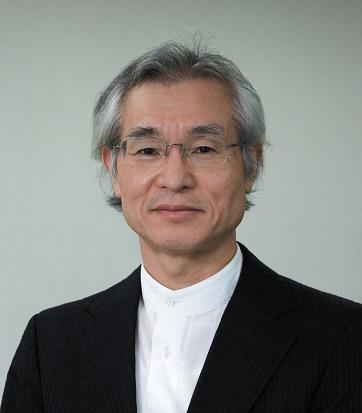
Fumiyuki Adachi (IEEE/IEICE Fellow)
Specially Appointed Professor for Research, Tohoku University, Japan
Title: Recent Advances in Distributed MIMO Transmission Techniques
for 5G Mobile Communications
Time:
10:00-10:30, Tuesday, March 6, 2018
Abstract:
The research and development of 5G mobile communications have been
intensified. Significantly improving both the spectrum- and
energy-efficiencies is demanded for providing enhanced mobile broadband
services. One promising approach is the distributed MIMO network (or
distributed antenna network) in which a number of antennas are distributed
over a macro-cell area to exploit more the spatial distribution of users. In
this talk, we will present recent advances in distributed MIMO transmission
techniques: single-user STBC-TD, multi-user MMSE-SVD, MIMO channel
estimation, and also blind SLM for suppressing the transmit signal PAPR.
Although the transmission performance can be significantly improved over a
macro-cell area, the cell-edge problem still exists. We will also present an
inter-cell interference coordination (ICIC) to overcome this problem in
distributed MIMO network.
Biography:
Fumiyuki Adachi received the B.S. and Dr. Eng. degrees in electrical engineering from Tohoku University, Sendai, Japan, in 1973 and 1984, respectively. In April 1973, he joined the Electrical Communications Laboratories of Nippon Telegraph & Telephone Corporation (now NTT) and conducted various researches on digital cellular mobile communications. From July 1992 to December 1999, he was with NTT Mobile Communications Network, Inc. (now NTT DoCoMo, Inc.), where he led a research group on Wideband CDMA for 3G systems. Since January 2000, he has been with Tohoku University, Sendai, Japan. His research interest is in the area of wireless signal processing (multi-access, equalization, antenna diversity, adaptive transmission, channel coding, etc.) and networking.
He is an IEICE Fellow and an IEEE Fellow. He was a recipient of the IEEE Vehicular Technology Society Avant Garde Award 2000, IEICE Achievement Award 2002, Thomson Scientific Research Front Award 2004, Ericsson Telecommunications Award 2008, Telecom System Technology Award 2009, Prime Minister Invention Award 2010, British Royal Academy of Engineering Distinguished Visiting Fellowship 2011, KDDI Foundation Excellent Research Award 2012, VTS Conference Chair Award 2014, C&C Prize 2014, and Rintaro Shida Award 2016. He is listed in Highly Cited Researchers 2001 (http://hcr.stateofinnovation.thomsonreuters.com/page/archives).
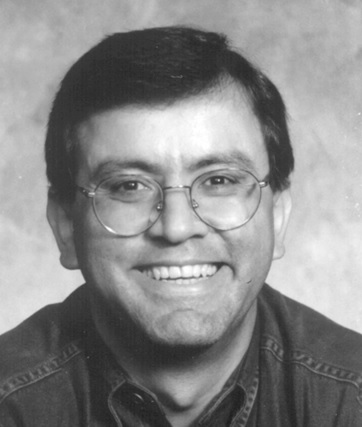
Ender Ayanoglu (IEEE Fellow)
Professor, University of California, Irvine,
USA
Title: Energy-Spectral Efficiency Tradeoff for Heterogeneous Networks
with QoS constraints
Time:
10:30-11:00, Tuesday, March 6, 2018
Abstract:
In this talk, we will discuss the energy efficiency (EE) and spectral efficiency (SE) tradeoff in multi-cell heterogeneous networks (HetNets). Our objective is to maximize both EE and SE of the network while satisfying the rate requirement of users. We use multi-objective optimization techniques to define the objective function. We propose a three-stage algorithm. First, we select the cell-center radius for the fractional frequency reuse (FFR) method. Second, we assign the frequency resources to satisfy the rate requirements of users and maximize the objective function. Third, the power allocation subproblem is solved by using the Levenberg-Marquardt method. Our numerical results show that a Pareto-optimal solution exists for EE and SE. We present results for different rate constraints.
Biography:
Ender Ayanoglu received the M.S. and Ph.D. degrees from Stanford University, Stanford, CA in 1982 and 1986, respectively, in electrical engineering. He was with the Communications Systems Research Laboratory, part of AT&T Bell Laboratories, Holmdel, NJ until 1996, and Bell Labs, Lucent Technologies until 1999. From 1999 until 2002, he was a Systems Architect at Cisco Systems, Inc., San Jose, CA. Since 2002, he has been a Professor in the Department of Electrical Engineering and Computer Science, University of California, Irvine, Irvine, CA, where he served as the Director of the Center for Pervasive Communications and Computing and held the Conexant-Broadcom Endowed Chair during 2002- 2010. His past accomplishments include invention of the 56K modems, characterization of wavelength conversion gain in Wavelength Division Multiplexed (WDM) systems, and diversity coding, a technique for link failure recovery in communication networks employing erasure coding in 1990, prior to the publication of the first papers on network coding. During 2000-2001, he served as the founding chair of the IEEE-ISTO Broadband Wireless Internet Forum (BWIF), an industry standards organization which developed and built a broadband wireless system employing Orthogonal Frequency Division Multiplexing (OFDM) and a Medium Access Control (MAC) algorithm that provides Quality-of-Service (QoS) guarantees. This system is the precursor of today’s Fourth Generation (4G) cellular wireless systems such as WiMAX, LTE, and LTEAdvanced. From 1993 until 2014 Dr. Ayanoglu was an Editor, and since January 2014 is a Senior Editor of the IEEE Transactions on Communications. He served as the Editor-in-Chief of the IEEE Transactions on Communications from 2004 to 2008. From 1990 to 2002, he served on the Executive Committee of the IEEE Communications Society Communication Theory Committee, and from 1999 to 2001, was its Chair. Dr. Ayanoglu is the recipient of the IEEE Communications Society Stephen O. Rice Prize Paper Award in 1995 and the IEEE Communications Society Best Tutorial Paper Award in 1997. He has been an IEEE Fellow since 1998.
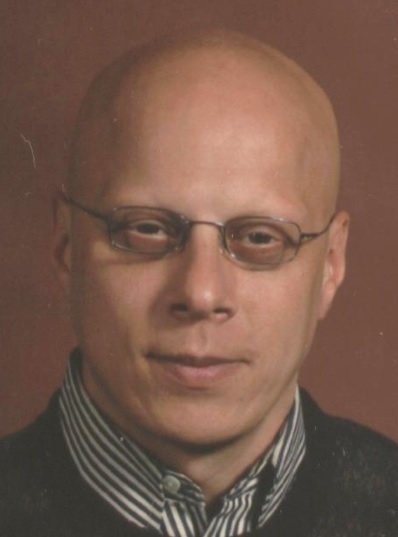
Azzedine Boukerche (IEEE/EiC/CAE/AAAS Fellow)
Distinguished University Professor, University of Ottawa, Canada
Title: Autonomous and Connected Vehicles: A New Challenge for Smart
Cities
Time:
16:30-17:00, Thursday, March 8, 2018
Abstract:
Smart vehicles and smart roads are the building block for a smart city. In
this presentation, we share results from several major research projects
related to the design of Autonomous/Connected vehicles and smart roads
applications through the DIVA Strategic Research Network, the TRANSIT
Network and the PARADISE Research Laboratory at the University of Ottawa.
First, we will review the main challenges of A/C vehicles including
modeling, simulation and design issues and discuss some results we have
obtained recently. Next, we will talk about LIVE testbed, a convergence
wireless multimedia and vehicular sensor technologies we have been
developing at PARADISE Research Laboratory for an urban vehicular grid. This
real-time testbed has been designed for traffic sign localization and
recognition, animal-vehicle mitigation as well as vision-based driver
assistance to pedestrian detection and protection.
Biography:
Azzedine Boukerche is a Distinguished University Professor and holds a Canada Research Chair Tier-1 position at the University of Ottawa. He is the Scientific Director of DIVA Strategic Research Network and NSERC TRANSIT Research Network, and a Director of PARADISE Research Laboratory at uOttawa. He worked as a Senior Scientist at the Simulation Sciences Division, Metron Corporation located in San Diego. He spent a year at the JPL/NASA-California Institute of Technology where he contributed to a project centred about the specification and verification of the software used to control interplanetary spacecraft operated by JPL/NASA Laboratory. He is a Fellow of IEEE (Computer Science Society), EiC, CAE (the Canadian Academy of Engineering) and AAAS (the American Association for the Advancement of Science). He is also a recipient of several international Awards, including, Cátedra de Excelencia at the University Carlos III of Madrid (UC3M), the IEEE G. Gottlieb Medal Award, the Ontario Premier Researcher Award, the University of Ottawa Excellence Research Award, G. Glinski Excellence in Research Award, and IEEE TCPP, and IEEE ComSoft Technical Achievement Awards. he serves as an Associate Editor for several IEEE/ACM Journals.
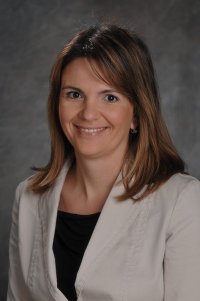
Danijela Cabric
Associate Professor, UCLA,
USA
Title: Learning Wireless Networks Footprints and Topologies in Shared
Spectrum
Time:
11:00-11:30, Tuesday, March 6, 2018
Abstract:
The increasing demand for wireless connectivity and the scarcity of spectrum
for exclusive use has popularized the idea of sharing spectrum between
multiple communication systems. For a network to estimate its own link
budget while avoiding interference from neighboring, or incumbent, networks,
it is necessary to learn the spatial, spectral, and temporal usage patterns
of its neighboring radios. We begin by proposing algorithms to learn the
footprint of each incumbent transmitter, i.e., the sets of CRs that receive
signals from that incumbent transmitter. By learning the Gaussian mixture
distribution of the received energy vector, we show that multiple
transmitters' footprints can be learnt irrespective of their spatial overlap
and potentially anisotropic shape. Learning the footprints also enables
sampling the activity of each incumbent radio. By identifying radios that
transmit as a response to the transmission of another, we learn the causal
links between pairs of incumbent radios, i.e., the topologies of the
incumbent networks. Thus, we can identify the potential receivers when a
particular incumbent radio is transmitting. Hence, we can identify the
communication links that can be established without causing interference to
the incumbent receivers. Thus, our work is important for the coexistence of
communicating networks with arbitrary geographical coverage such as LTE-Unlicensed
and WiFi, radars and WiFi, etc. Our inferences can also be used to improve
sensing schedules, access strategies, and routing in ad hoc networks.
Biography:
Danijela Cabric received the Dipl. Ing. degree from the University of Belgrade, Serbia, in 1998, and the M.Sc. degree in electrical engineering from the University of California, Los Angeles, in 2001. She received her Ph.D. degree in electrical engineering from the University of California, Berkeley, in 2007, where she was a member of the Berkeley Wireless Research Center. In 2008, she joined the faculty of the Electrical Engineering Department at the University of California, Los Angeles, where she is now Associate Professor. Dr. Cabric received the Samueli Fellowship in 2008, the Okawa Foundation Research Grant in 2009, Hellman Fellowship in 2012 and the National Science Foundation Faculty Early Career Development (CAREER) Award in 2012. She served as an Associate Editor in IEEE Journal on Selected Areas in Communications (Cognitive Radio series) and IEEE Communications Letters, and TPC Co-Chair of 8th International Conference on Cognitive Radio Oriented Wireless Networks (CROWNCOM) 2013. She is now Associated Editor of IEEE Transactions of Cognitive Communications and Networking. Her research interests include novel radio architecture, signal processing, and networking techniques for cognitive radio, 5G and massive MIMO systems.

Tracy Camp
(ACM/IEEE Fellow)
Professor,
Colorado School of Mines,
USA
Title: SmartGeo: Toward the Development of Intelligent Geosystems
Time:
11:30-12:00, Tuesday, March 6, 2018
Abstract:
Earthen dams are critical components in our world's water resource infrastructure, but many are at or near their intended design life. Imagine an earthen dam that monitors itself daily, detects early onset of internal erosion, and takes action to avoid a catastrophic failure. The goal of the SmartGeo program at the Colorado School of Mines is to turn this type of system into reality. We are working to develop intelligent geosystems, in order to enable engineered and natural earth structures and environments to (1) sense their environment and (2) adapt to improve performance.
In this presentation, we will begin with the motivation for our SmartGeo program and the challenges that exist to reach our goal of intelligent geosystems. We will then delve into one specific challenge. Specifically, designing an efficient wireless sensor network capable of real-time, continuous (e.g., 500 Hz sampling rate), geophysical monitoring requires a more intelligent approach than a naive "sense, store, send" method. We, therefore, have been investigating whether compressive sensing techniques are effective with our geophysical data and how we can implement in our resource constrained environment. Our results are promising, and lead us to promote compressive sensing as a useful tool for other wireless sensor network applications.
Biography:
Tracy Camp is a Full Professor of Computer Science in the Department of Electrical Engineering and Computer Science at the Colorado School of Mines. She is the Founder and Director of the Toilers (http://toilers.mines.edu), an active ad hoc networks research group. Her current research interests include the credibility of ad hoc network simulation studies and the use of wireless sensor networks in geosystems. Dr. Camp has received over 20 grants from the National Science Foundation, including a prestigious NSF CAREER award. In total, her projects have received over $20 million dollars in external funding. This funding has produced 12 software packages that have been requested from (and shared with) more than 3000 researchers in 86 countries (as of October 2012). Dr. Camp has published over 80 refereed articles and 12 invited articles, and these articles have been cited almost 4,000 times (per Microsoft Academic Search) and over 7,000 times (per Google Scholar) as of December 2012. Dr. Camp is an ACM Fellow, an ACM Distinguished Lecturer, and an IEEE Fellow. She has enjoyed being a Fulbright Scholar in New Zealand (in 2006), a Distinguished Visitor at the University of Bonn in Germany (in 2010), and a keynote presenter at several venues, e.g., at the 7th International Conference on Intelligent Sensors, Sensor Networks and Information Processing (ISSNIP 2011) in Adelaide, Australia, and the 3rd International Conference on Simulation Tools and Techniques (SIMUTools 2010) in Malaga, Spain. In December 2007, Dr. Camp received the Board of Trustees Outstanding Faculty Award at the Colorado School of Mines; this award was only given five times between 1998-2007. She shares her life with Max (born in 2000), Emma (born in 2003), her husband (Glen), and three pets (two cats and a dog). The four humans are vegetarians who tremendously enjoy living in the foothills of the Rockies.
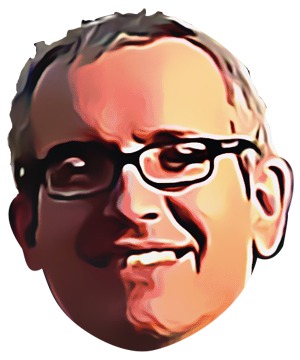
Luiz DaSilva
(IEEE Fellow)
Chair
Professor,
Trinity College Dublin,
Ireland
Title: Shared Networks and the Evolution towards 5G
Time:
16:00-16:30, Tuesday, March 6, 2018
Abstract:
The diverse and demanding requirements for the next generation of mobile
networks necessitate a shift away from the rigid networks of previous
generations, towards greater versatility and adaptability. Essential
enablers for this versatility include: new, more flexible radio access
technologies; the ability to share network infrastructure and spectrum; and
dynamic management of resources across the wireless access and the optical
backbone and core networks. In this talk, we will present our recent results
on radio access network and spectrum sharing and how they affect planning
for future network deployments. We will also discuss how our vision of broad
resource sharing aligns with trends in 5G including softwarization,
virtualization, and network slicing.
Biography:
Luiz A. DaSilva holds the personal chair of Telecommunications at Trinity College, where he is a co-principal investigator of CONNECT, a telecommunications centre funded by the Science Foundation Ireland. Prior to joining TCD, Prof DaSilva was a tenured professor in the Bradley Department of Electrical and Computer Engineering at Virginia Tech. His research focuses on distributed and adaptive resource management in wireless networks, and in particular radio resource sharing and the application of game theory to wireless networks. Prof DaSilva is a principal investigator on research projects funded by the National Science Foundation, the Science Foundation Ireland, and the European Commission under Horizon 2020. Prof DaSilva is an IEEE Communications Society Distinguished Lecturer. He is also a Fellow of the IEEE, for contributions to cognitive networks and to resource management in wireless networks.
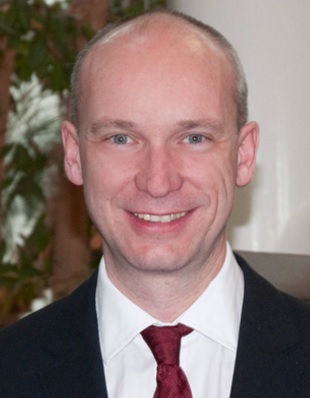
Falko Dressler (IEEE Fellow)
Professor,
University of Paderborn, Germany
Title: Cyber Physical Social Systems: Towards Deeply Integrated
Hybridized Systems
Time:
16:30-17:00, Tuesday, March 6, 2018
Abstract:
Research on Cyber Physical Systems (CPS) has led to quite a number of
astonishing technical solutions that are becoming standard in many
application domains affecting our everyday life. The technical innovations
range from control theory concepts to real-time wireless communication to
networked control. Some of the most challenging applications include co-
operative autonomous driving and industry automation. Despite all these
great findings, our research community frequently lost track on the impact
of individual human beings that are an integral part of the systems – both
as a user as well as a source of disruption. We thus need a paradigm shift
from classical CPS to Cyber Physical Social Systems (CPSS). Studying the
impact of CPS on humans and vice versa, hybridization, i.e., machines and
human users covering parts of the system function in deep interaction, is
required as a novel core concept. This is also a basis for final public
acceptance as a key to success of new technologies. We investigate these
ideas based on the application domain of cooperative autonomous driving and
identify core research challenges of such hybridized CPSS.
Biography:
Falko Dressler is Full Professor for Computer Science and Chair for Distributed Embedded Systems at the Heinz Nixdorf Institute and the Dept. of Computer Science, University of Paderborn, where he is also a member of the University Senate. Before moving to Paderborn, he was a Full Professor at the Institute of Computer Science, University of Innsbruck and an Assistant Professor at the Dept. of Computer Science, University of Erlangen. Dr. Dressler received his M.Sc. and Ph.D. degrees from the Dept. of Computer Science, University of Erlangen in 1998 and 2003, respectively. He is associate editor-in-chief for Elsevier Computer Communications as well as an editor for journals such as IEEE Trans. on Mobile Computing, Elsevier Ad Hoc Networks, and Elsevier Nano Communication Networks. He has been guest editor of special issues in IEEE Journal on Selected Areas in Communications (JSAC), IEEE Communications Magazine, Elsevier Ad Hoc Networks, and many others. Dr. Dressler has been chairing conferences such as IEEE INFOCOM, ACM MobiSys, ACM MobiHoc, IEEE VNC, IEEE GLOBECOM, and many others. He authored the textbooks Self-Organization in Sensor and Actor Networks published by Wiley & Sons and Vehicular Networking published by Cambridge University Press. Dr. Dressler has been an IEEE Distinguished Lecturer as well as an ACM Distinguished Speaker.
Dr. Dressler is an IEEE Fellow (COMSOC, CS, VTS) as well as a Senior Member of ACM (SIGMOBILE), and member of GI (GIBU, KuVS). He also serves in the IEEE COMSOC Conference Council. His research objectives include adaptive wireless networking, self-organization techniques, and embedded system design with applications in ad hoc and sensor networks, vehicular networks, industrial wireless networks, and nano-networking.
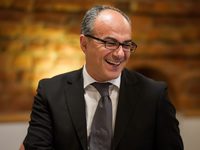
Schahram Dustdar
(IEEE Fellow)
Professor,
TU Wien, Austria
Title: Cyber-Human Partnerships – Towards a Resilient Ecosystem in
Smart Cities
Time:
17:00-17:30, Tuesday, March 6, 2018
Abstract:
In this talk I will explore one of the most relevant challenges for a decade
to come: How to integrate the Internet of Things with software, people, and
processes, considering modern Cloud Computing and the Internet of Things (IoT)
with Big Data. I will present a fresh look at this problem, and examine how
to integrate people, software services, and things with their data, into one
novel resilient ecosystem, which can be modeled, programmed, and deployed on
a large scale in an elastic way. This novel paradigm has major consequences
on how we view, build, design, and deploy ultra-large scale distributed
systems and establishes a novel foundation for an “architecure of value”
driven Smart City.
Biography:
Schahram Dustdar is Full Professor of Computer Science and head of The Distributed Systems Group at the TU Wien, Austria. From 2004-2010 he was also Honorary Professor of Information Systems at the Department of Computing Science at the University of Groningen (RuG), The Netherlands. From Dec 2016 until Jan 2017 he was a Visiting Professor at the University of Sevilla, Spain and from January until June 2017 he was a Visiting Professor at UC Berkeley, USA. He is an Associate Editor of IEEE Transactions on Cloud Computing, IEEE Transactions on Services Computing, ACM Transactions on the Web, and ACM Transactions on Internet Technology and on the editorial board of IEEE Internet Computing and IEEE Computer. He is the Editor-in-Chief of Computing (Springer). Dustdar is recipient of the ACM Distinguished Scientist award (2009), the IBM Faculty Award (2012), an elected member of the Academia Europaea: The Academy of Europe, and an IEEE Fellow (2016).

Georgios Giannakis
(IEEE/EURASIP Fellow)
Professor,
University of Minnesota, USA
Title: Learning Nonlinear and Dynamic Network Connectivity and
Processes on Graphs
Time:
17:30-18:00, Tuesday, March 6, 2018
Abstract:
Learning the topology of graphs as well as processes evolving over graphs
are tasks emerging in application domains as diverse as gene-regulatory,
brain, power, and social networks, to name a few. Scalable approaches to
deal with such high-dimensional settings aim to address the unique modeling
and computational challenges associated with data-driven science in the
modern era of big data analytics. Albeit simple and tractable, linear
time-invariant models are limited as they are incapable of modeling changing
topologies, as well as nonlinear and dynamic dependencies between nodal
processes. To this end, novel approaches are presented to leverage nonlinear
counterparts of partial correlation and partial Granger causality, as well
as nonlinear structural equations and vector auto-regressions, along with
attributes such as low rank, sparsity, and smoothness to capture even
directional dependencies with abrupt change points, as well as dynamic
processes over possibly time-evolving topologies. The unifying framework
inherits the versatility and generality of kernel-based methods, and lends
itself to batch and computationally affordable online learning algorithms,
which include novel Kalman filters and smoothers over graphs. Real data
experiments highlight the impact of the nonlinear and dynamic models on
gene-regulatory and functional connectivity of brain networks, where
connectivity patterns revealed exhibit discernible differences relative to
existing approaches.
Biography:
Georgios B. Giannakis (Fellow’97) received his Diploma in Electrical Engr. from the Ntl. Tech. Univ. of Athens, Greece, 1981. From 1982 to 1986 he was with the Univ. of Southern California (USC), where he received his MSc. in Electrical Engineering, 1983, MSc. in Mathematics, 1986, and Ph.D. in Electrical Engr., 1986. He was with the University of Virginia from 1987 to 1998, and since 1999 he has been a professor with the Univ. of Minnesota, where he holds a Chair in Wireless Telecommunications, a University of Minnesota McKnight Presidential Chair in ECE, and serves as director of the Digital Technology Center. His general interests span the areas of communications, networking and statistical signal processing – subjects on which he has published more than 400 journal papers, 700 conference papers, 25 book chapters, two edited books and two research monographs (h-index 127). Current research focuses on big data analytics, wireless cognitive radios, network science with applications to social, brain, and power networks with renewables. He is the (co-) inventor of 30 patents issued, and the (co-) recipient of 8 best paper awards from the IEEE Signal Processing (SP) and Communications Societies, including the G. Marconi Prize Paper Award in Wireless Communications. He also received Technical Achievement Awards from the SP Society (2000), from EURASIP (2005), a Young Faculty Teaching Award, the G. W. Taylor Award for Distinguished Research from the University of Minnesota, and the inaugural IEEE Fourier Technical Field Award (2015). He is a Fellow of EURASIP, and has served the IEEE in a number of posts including that of a Distinguished Lecturer for the IEEE-SP Society.
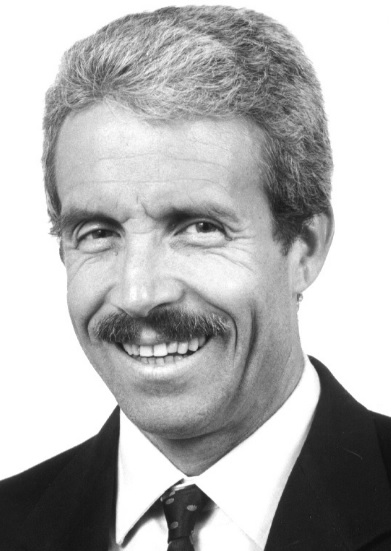
Mario Gerla (ACM/IEEE Fellow)
Distinguished
Professor,
UCLA, USA
Title: Internet of Vehicles and Autonomous Connected Cars - Privacy
and Security Issues
Time:
16:00-16:30, Tuesday, March 6, 2018
Abstract:
In the Intelligent Vehicle Grid, the car is becoming a formidable sensor
platform, absorbing information from the environment, from other cars (and
from the driver) and feeding it to other cars and infrastructure to assist
in safe navigation, pollution control and traffic management. The Vehicle
Grid essentially becomes an Internet of Things (IOT), which we call Internet
of Vehicles (IOV), capable to make its own decisions about driving customers
to their destinations. Like other important IOT examples (e.g., smart
buildings), the Internet of Vehicles will not merely upload data to the
Internet using V2I. It will also use V2V communications between peers to
complement on board sensor inputs and provide safe and efficient navigation.
In this paper, we first describe several vehicular applications that
leverage V2V and V2I. Communications with infrastructure and with other
vehicles, however, can create new problems – privacy and security
violations. In the second part of the paper we address these issues and more
specifically focus on the need to guarantee location privacy to mobile
users. We argue on the importance of creating public, open “smart city” data
repositories for the research community and propose privacy preserving
techniques for the anonymous uploading of urban sensor data from vehicles.
Biography:
Dr. Mario Gerla is John Postel Chair
Professor in the Computer Science Dept at UCLA. He holds an Engineering degree
from Politecnico di Milano, Italy and the Ph.D. degree from UCLA. At UCLA, he
was part of the team that developed the early ARPANET protocols under the
guidance of Prof. Leonard Kleinrock. He joined the UCLA Faculty in 1976.
At UCLA he has designed network protocols including ad hoc wireless clustering,
multicast (ODMRP and CODECast) and Internet transport (TCP Westwood). He has
lead the ONR MINUTEMAN project, designing the next generation scalable airborne
Internet for tactical and homeland defense scenarios. His team is developing a
Campus Vehicular Testbed. Parallel research activities are wireless medical
monitoring using smart phones and cognitive radios in urban environments.
He is active in the organization of conferences and workshops, including
MedHocNet and WONS. He serves on the IEEE TON Scientific Advisory Board. He
became IEEE Fellow in 2002, was recently recognized with the MILCOM Technical
Contribution Award in 2011, the IEEE Ad Hoc and Sensor Network Society
Achievement Award in 2011 and the ACM Sigmobile Outstanding Contribution Award
in 2015.
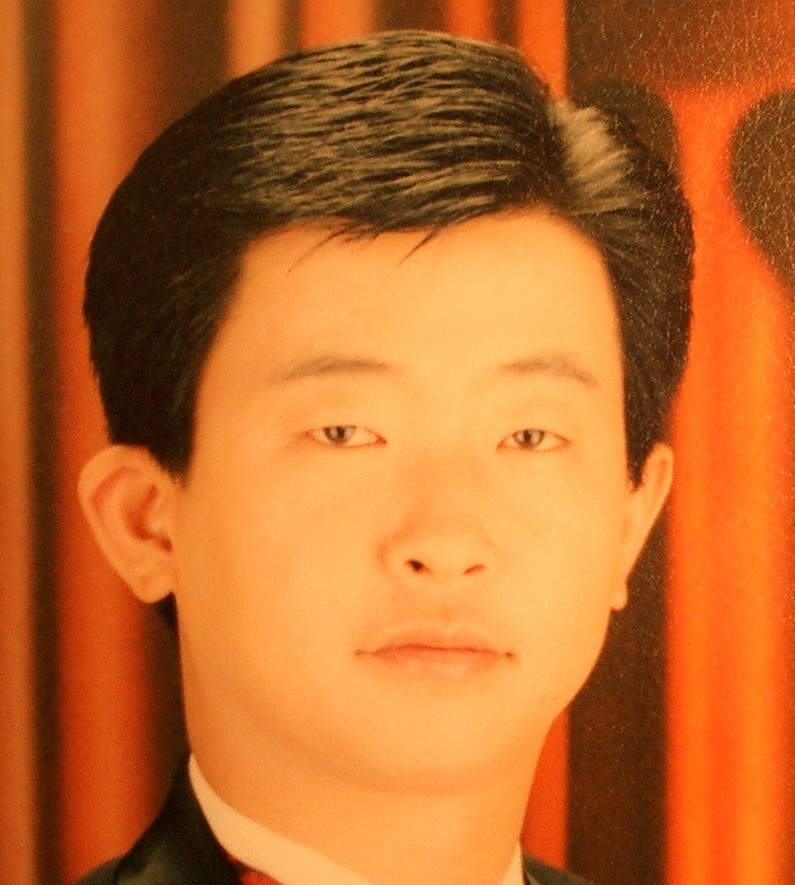
Zhu Han (IEEE Fellow)
Professor,
University of Houston, USA
Title: Big Data Analysis for Smart Grid
Time:
16:30-17:00, Tuesday, March 6, 2018
Abstract:
The advent of big data offers unprecedented opportunities for data-driven
discovery and decision-making in virtually every area of human endeavor. In
this talk, we zoom in to the applications of smart grid, which refers to the
next generation electrical power grid that aims to provide reliable,
efficient, secure, and quality energy generation/distribution/consumption
using modern information, communications, and electronics technology. We
further zoom in to study two specific cases. First, supported by local
utility companies through electric power analytics consortium, we analyze
real smart meter big data for load profiling and smart pricing. We employ
techniques such as Bayesian nonparametric learning, sublinear algorithm, and
deep learning. Second, we investigate how to solve Security-constrained
Optimal Power Flow (SCOPF) Problem, through sparse optimization and
alternating direction method of multipliers (ADMM). Finally, other research
activities of our group will also be briefly described.
Biography:
Zhu Han (S’01–M’04-SM’09-F’14) received the B.S. degree in electronic engineering from Tsinghua University, in 1997, and the M.S. and Ph.D. degrees in electrical and computer engineering from the University of Maryland, College Park, in 1999 and 2003, respectively.
From 2000 to 2002, he was an R&D Engineer of JDSU, Germantown, Maryland. From 2003 to 2006, he was a Research Associate at the University of Maryland. From 2006 to 2008, he was an assistant professor at Boise State University, Idaho. Currently, he is a Professor in the Electrical and Computer Engineering Department as well as in the Computer Science Department at the University of Houston, Texas. His research interests include wireless resource allocation and management, wireless communications and networking, game theory, big data analysis, security, and smart grid. Dr. Han received an NSF Career Award in 2010, the Fred W. Ellersick Prize of the IEEE Communication Society in 2011, the EURASIP Best Paper Award for the Journal on Advances in Signal Processing in 2015, IEEE Leonard G. Abraham Prize in the field of Communications Systems (best paper award in IEEE JSAC) in 2016, and several best paper awards in IEEE conferences. Currently, Dr. Han is an IEEE Communications Society Distinguished Lecturer.
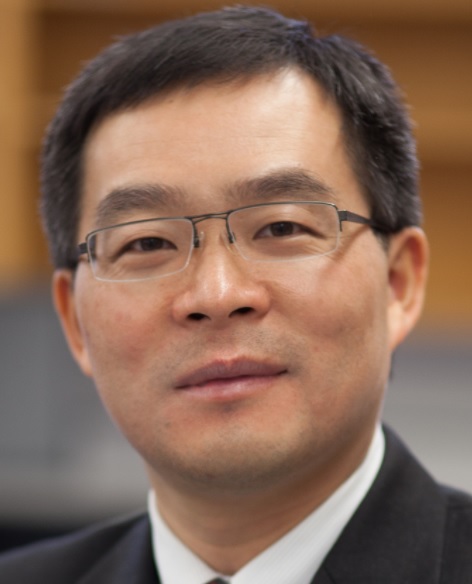
Haibo He (EiC, IEEE Transactions on Neural Networks and
Learning Systems)
Robert Haas Endowed Chair Professor, University of Rhode Island, USA
Title: Tackling Imbalanced Learning in Big Data Era
Time:
17:00-17:30, Thursday, March 8, 2018
Abstract:
Big data has become an important topic worldwide over the past several
years. Among many aspects of the big data research and development,
imbalanced learning has become a critical component as many data sets in
real-world applications are imbalanced, ranging from surveillance, security,
Internet, finance, social network, to medical and healthy related data
analysis. In general, the imbalanced learning problem is concerned with the
performance of learning algorithms in the presence of underrepresented data
and severe class distribution skews. Due to the inherent complex
characteristics of imbalanced data sets, learning from such data requires
new understandings, principles, algorithms, and tools to transform vast
amounts of raw data efficiently and effectively into information and
knowledge representation to support decision-making process. In this talk, I
will start with an overview of the nature and foundation of the imbalanced
learning problem, and then focus on the state-of-the-art methods and
technologies in dealing with the imbalanced data, followed by a systematic
discussion on the assessment metrics to evaluate learning performance under
the imbalanced learning scenario. I will also present the latest research
development in our group that we have developed and tested on various
imbalanced data sets. Furthermore, as a relatively new challenge to the
community, I will highlight the major opportunities and challenges, as well
as potential important research directions for learning from imbalanced data
facing the big data era.
Biography:
Haibo He is the Robert Haas Endowed Chair Professor and the Director of the Computational Intelligence and Self-Adaptive (CISA) Laboratory at the University of Rhode Island, Kingston, RI, USA. He has published one sole-author book (Wiley), edited 1 book (Wiley-IEEE) and 6 conference proceedings (Springer), and authored/co-authors over 250 peer-reviewed journal and conference papers, including several highly-cited papers in IEEE Transactions on Neural Networks and IEEE Transactions on Knowledge and Data Engineering, Cover Page Highlighted paper in IEEE Transactions on Information Forensics and Security, and Best Readings of the IEEE Communications Society. He has delivered more than 50 invited/keynote/plenary talks around the globe. He was the Chair of IEEE Computational Intelligence Society (CIS) Emergent Technologies Technical Committee (ETTC) (2015) and the Chair of IEEE CIS Neural Networks Technical Committee (NNTC) (2013 and 2014). He served as the General Chair of 2014 IEEE Symposium Series on Computational Intelligence (IEEE SSCI’14, Orlando, Florida). He is currently the Editor-in-Chief of IEEE Transactions on Neural Networks and Learning Systems. He was a recipient of the IEEE International Conference on Communications (ICC) “Best Paper Award” (2014), IEEE CIS “Outstanding Early Career Award” (2014), National Science Foundation “Faculty Early Career Development (CAREER) Award” (2011), and Providence Business News (PBN) “Rising Star Innovator” Award (2011). More information can be found at: http://www.ele.uri.edu/faculty/he/
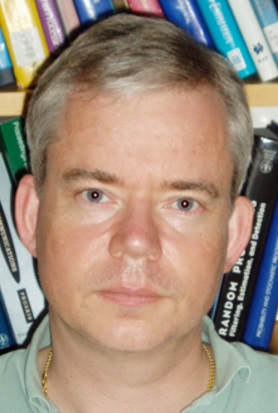
Anders Høst-Madsen (IEEE Fellow)
Professor,
University of Hawaii, USA
Title: Fundamental Limits on Energy in Wireless Networks
Time:
16:00-16:30, Thursday, March 8, 2018
Abstract:
What is the minimum energy required to transport one bit of information over
a wireless network? In this talk we will explore this question from a
fundamental information theory point of view. We will discuss how network
topology, interference, and cooperation affects energy, and how the
information theory insights can be used in designing networks. We will first
outline results on the limits of energy per bit in networks when there are
no constraints on bandwidth or delay. We will next show how these results
change when there is a bandwidth constraint, and show that the effect of
interference on energy consumption can be drastically reduced through
interference alignment. We will finally show that a delay constraint quite
dramatically increases the energy required per bit.
Biography:
He was born in Denmark in 1966. He received the M.Sc. degree in electrical engineering in 1990 and the Ph.D. degree in mathematics in 1993, both from the Technical University of Denmark. From 1993 to 1996 he was with Dantec Dynamics, Copenhagen, Denmark, from 1996 to 1998 he was an assistant professor at Kwangju Institute of Science and Technology, Kwangju, Korea, and from 1998 to 2000 an assistant professor at Department of Electrical and Computer Engineering, University of Calgary, Calgary, AB, Canada, and a staff scientist at TRLabs, Calgary. Since 2001 he has been with the Department of Electrical Engineering, University of Hawaii at Manoa, Honolulu, as professor since 2009. He was also a founder and CTO of Kai Sensors, Inc., which is making equipment for non-contact heart monitoring. His research interests are in statistical signal processing, information theory, and wireless communications, including ad-hoc networks, cooperative diversity, wireless sensor networks, heart monitoring, and signal processing for underwater acoustics.
He is a Fellow of IEEE (2013), and has served as Editor for Multiuser Communications for the IEEE Transactions on Communications and as Associate Editor for Detection and Estimation for the IEEE Transactions on Information Theory. He received the Eurasip Journal of Wireless Communications and Networks (JWCN) best paper award in 2006. He is general co-chair of ISITA 2012 and IEEE ISIT 2014.
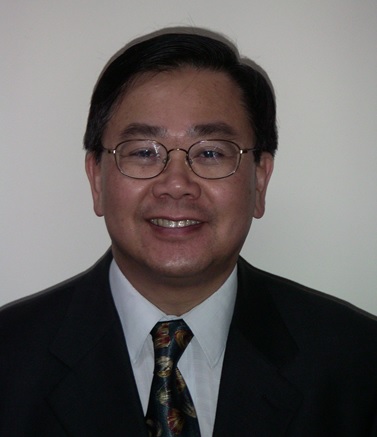
Victor C.M. Leung (IEEE/RSC/EIC/CAE Fellow)
TELUS Mobility Research Chair Professor, The University of British Columbia,
Canada
Title: Content-centric Edge Caching for 5G Mobile Internet and Beyond
Time:
17:30-18:00, Tuesday, March 6, 2018
Abstract:
Mobile data traffic is increasing explosively in recent years due to
tremendous growth in demands from mobile users for multimedia contents.
However, current mobile networking technologies, including network
architectures and data transmission techniques, cannot support the
anticipated traffic load without degrading mobile user’s QoS/QoE. Much
ongoing research efforts are targeted at developing technologies for 5G
mobile Internets and beyond to overcome these limitations. Content-centric
edge caching has recently emerged as a promising technique to satisfy the
demands of popular multimedia contents that are requested repeatedly by
multiple mobile users over a period of time. This talk will motivate and
explore the design principles and goals of content-centric edge caching. We
shall present a generalized architectural framework as a basis of
differentiating different edge caching designs. We shall present several
trace-driven case studies to illustrate the optimization of some design
alternatives. We shall conclude the talk with a discussion of research
opportunities and challenges in content-centric edge caching.
Biography:
Victor C. M. Leung is a Professor and the holder of the TELUS Mobility Research Chair in Advanced Telecommunications Engineering in the Department of Electrical and Computer Engineering, the University of British Columbia. His research interests are in the areas of wireless networks and mobile systems. He has co-authored more than 1000 technical papers in international journals and conference proceedings, and edited several books in these areas. Several of his papers have been selected for best paper awards.
Dr. Leung is a registered professional engineer in the Province of British Columbia, Canada. He is a Fellow of IEEE, the Royal Society of Canada, the Engineering Institute of Canada, and the Canadian Academy of Engineering. He was a Distinguished Lecturer of the IEEE Communications Society. He has served on the editorial boards of the IEEE Journal on Selected Areas in Communications, the IEEE Transactions on Computers, Wireless Communications, and Vehicular Technology, the IEEE Wireless Communications Letters, and currently serves on the editorial boards of the IEEE Transactions on Cloud Computing, and Green Communications and Networking, as well as several other journals. He has guest-edited many journal special issues, and served on the technical program committees and organizing committees of numerous international conferences. Dr. Leung is a winner of the IEEE Vancouver Section Centennial Award, the 2011 UBC Killam Research Prize, and the 2017 Canadian Award for Telecommunications Research. He co-authored papers that won the 2017 IEEE ComSoc Fred W. Ellersick Prize and the 2017 IEEE Systems Journal Best Paper Award.

Jiangchuan Liu (IEEE Fellow)
University Professor, Simon Fraser University, Canada
Title: Toward Next Generation Multimedia Data Processing and Sharing
Time:
17:00-17:30, Tuesday, March 6, 2018
Abstract:
In this talk, I will present my view on the evolution of multimedia
networking in the past two decades, and introduce our recent works toward
next generation multimedia content processing and sharing with a convergence
of social, mobile, and cloud computing. With practical examples, we show
that, in this era of big data and IoT, ambient/context sensing and
frontend/backend intelligence play important roles beyond advanced network
architecture and protocol design. We will explore the next generation of
smart computing and communication platforms, in particular, intelligent
vehicles.
Biography:
Jiangchuan Liu is currently a Full Professor (with University Professorship) in the School of Computing Science at Simon Fraser University, British Columbia, Canada. He is an IEEE Fellow and NSERC E.W.R. Steacie Memorial Fellow. He received B.Eng. (Cum Laude) from Tsinghua University, Beijing, China, in 1999, and Ph.D. from The Hong Kong University of Science and Technology in 2003, both in Computer Science. His research interest is in networking and multimedia; in particular, multimedia content processing and communications, wireless mobile networking, RFID, cloud and big data computing, online gaming and social networking.
He is a Steering Committee Member of IEEE Transactions on Mobile Computing, and Associate Editor of IEEE/ACM Transactions on Networking, IEEE Transactions on Big Data, IEEE Transactions on Network Sciences and Engineering, and IEEE Transactions on Multimedia. He is a co-recipient of the inaugural Test of Time Paper Award of IEEE INFOCOM (2015), ACM SIGMM TOMCCAP Nicolas D. Georganas Best Paper Award (2013), and ACM Multimedia Best Paper Award (2012).

Wenjing Lou (IEEE Fellow)
Professor,
Virginia Tech, USA
Title: The Internet of Things and its Security Challenges
Time:
16:30-17:00, Wednesday, March 7, 2018
Abstract:
Internet of Things (IoT) is an emerging technology that has drawn a lot of
attention in recent years. Things in IoT can take a wide variety of forms,
from simple RFIDs attached to merchandises, smart thermostats installed in
the classrooms, implantable medical devices on the patients, to video
cameras on top of light poles, and automobiles with built-in sensors. The
explosive deployment of IoTs has pushed the boundary of the cyber-world to
be tightly intertwined with our physical world. The IoT enables the exchange
of information in a variety of application scenarios, each having unique
characteristics and requiring unique performance guarantees, and together
they bring potentially tremendous benefits to us- home automation,
environmental monitoring, health and lifestyle, smart cities, just to name a
few.
Some significant risks go along with the potential benefits of the IoT. As
we add devices to our cloths, bodies, homes, and environments, more personal
information will be collected. Some information is deeply sensitive. As
devices are more closely connected with our physical world and some are
capable of taking actions, data security and device security become
critically important. Last year, IoT devices have also been exploited to
launch the largest DDoS attack in history to disrupt the Internet services.
A secure and trustworthy IoT is not an easy task. It demands multiple lines
of defense from different layers to thwart attacks from both the physical
world and cyberspace. It also requires the integration of security and
privacy mechanisms into computing and networking functions. In this talk, I
will introduce the network architecture and unique characteristics of IoT
systems. I will then focus on unique security and privacy challenges in the
IoT. Many of the security and privacy problems are very challenging and call
for interdisciplinary expertise from a number of technical domains.
Biography:
Wenjing Lou is a Professor of Computer
Science at Virginia Tech and a Fellow of the IEEE. She holds a Ph.D. in
Electrical and Computer Engineering from the University of Florida. Her research
interests cover many topics in the cybersecurity field, with her current
research interest focusing on privacy protection techniques in networked
information systems and cross-layer security enhancement in wireless networks.
Prof. Lou is currently on the editorial boards of ACM/IEEE Transactions on
Networking, IEEE Transactions on Mobile Computing, and Journal of Computer
Security. She is the Steering Committee Chair of IEEE Conference on
Communications and Network Security (IEEE CNS), which is a conference series in
IEEE Communications Society (ComSoc) core conference portfolio and the only
ComSoc conference focusing solely on cybersecurity.
Prof. Lou served as a program director at the US National Science Foundation
(NSF) from August 2014 to August 2017. At NSF, her responsibilities included the
Networking Technology and Systems (NeTS) program, a core program of the Computer
and Network Systems (CNS) division within the Directorate for Computer &
Information Science & Engineering (CISE), and the Secure and Trustworthy
Cyberspace (SaTC) program, a cross-cutting security program led by CISE/CNS.
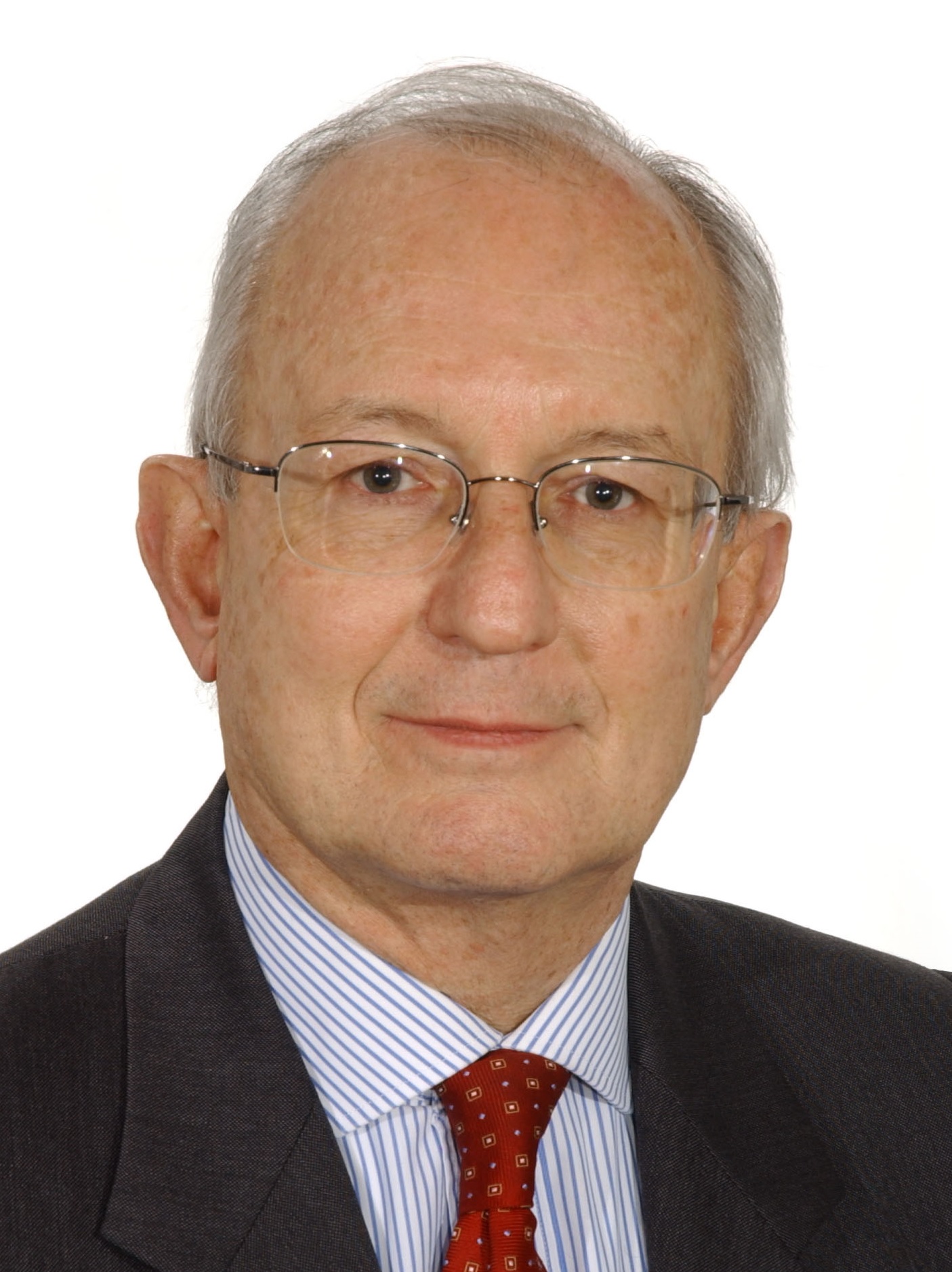
Marco Ajmone Marsan (IEEE Fellow, Member of TAS)
Professor,
Politecnico di Torino,
Italy
Title: Modeling resource allocation in cellular networks
Time:
17:00-17:30, Wednesday, March 7, 2018
Abstract:
After cellular network resources are used for a service, they remain
allocated to the end user for some time before release, so that if a new
service request is generated by the same user, they are immediately
available, with no risk of blocking. This behavior differs from the one
captured by normal queuing models (for example an M/M/K/0 queue), but it can
nevertheless be described with simple networks of queues that yield a closed
form expression for the blocking probability. This talk discusses the model
development and solution, and compares the model performance predictions to
traditional queueing models results, such as the Erlang B formula
iteratively applied to the resources that are not blocked by potentially
returning users.
Biography:
Marco Ajmone Marsan is a Full Professor of Telecommunications at the Politecnico di Torino in Italy, and a part-time Research Professor at the IMDEA Networks Institute in Spain. He served as the ViceRector for Research, Innovation and Technology Transfer at the Politecnico di Torino from 2002 to 2009. From September 2002 to March 2007 he was the Director of the Institute for Electronics, Information and Telecommunications Engineering of the National Research Council of Italy. He was the chair of the Italian Group of Telecommunications Professors, and the Italian Delegate in the ICT Committee and in the ERC Committee of the 7th Framework Programme of the EU. The research activity of Marco Ajmone Marsan has focused on the performance evaluation of networks and protocols. His main present research interests are in energy-efficient networking, and in the applications of ICT for energy efficiency, as well as in crowdsourcing systems. He has published over 300 papers in the most important journals and conferences of the domains of networking and performance evaluation, as well as two books. He has been a member of the editorial board of the ACM/ IEEE Transactions on Networking, and he is on the editorial board of the journals Computer Networks, and Performance Evaluation of Elsevier, and of the ACM Transactions on Modeling and Performance Evaluation of Computing Systems. He was the general chair or technical program chair of several important conferences in his field, and the general chair of INFOCOM 2013. Marco Ajmone Marsan is a Fellow of IEEE, and a member of the Turin Academy of Sciences. He is qualified as "ISI highly cited researcher".
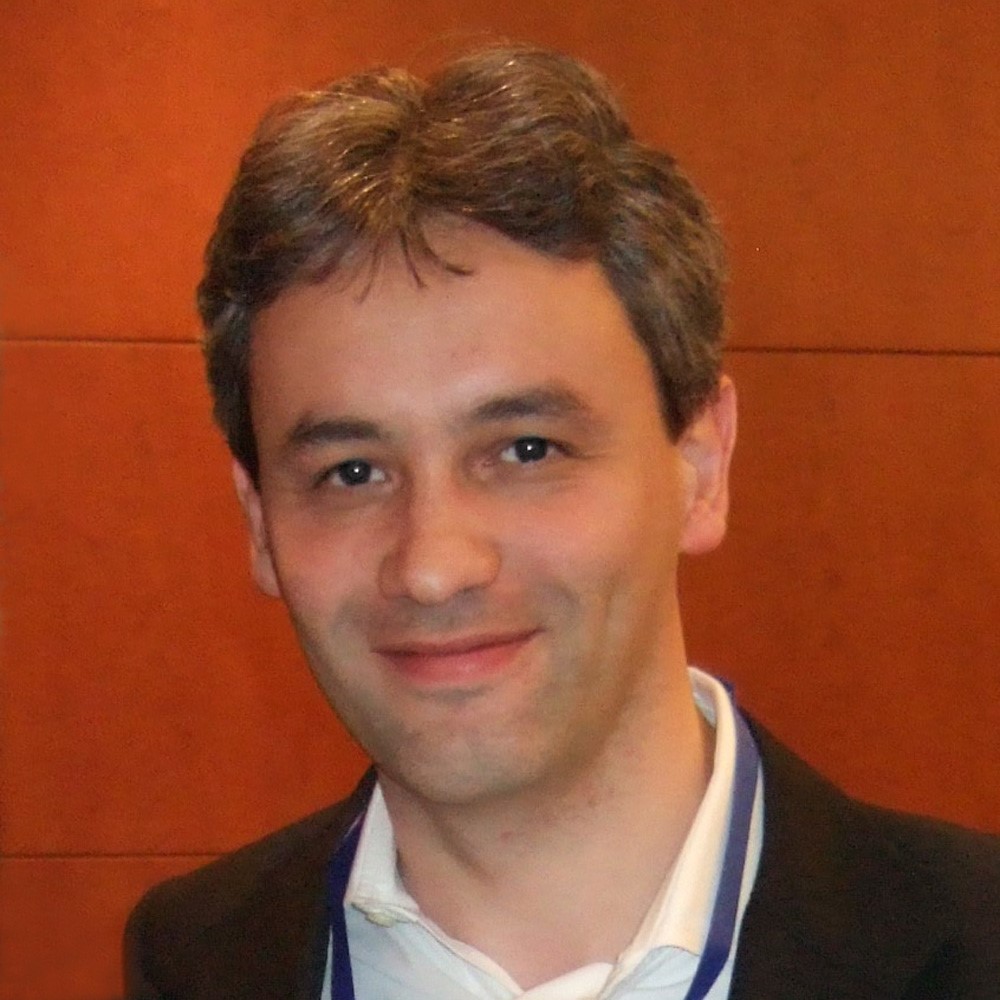
Tommaso Melodia (IEEE Fellow)
Associate
Professor,
Northeastern University,
USA
Title: Toward an Optimization-Based Wireless Network Operating System
Time:
17:30-18:00, Wednesday, March 7, 2018
Abstract:
This talk will present the basic design principles for a radically different
approach to software-defined networking (SDN) for infrastructure-less
wireless networks. Departing from well-understood approaches inspired by
OpenFlow, our Wireless Network Operating System provides the network
designer with an abstraction hiding (i) the lower-level details of the
wireless protocol stack and (ii) the distributed nature of the network
operations. Based on this abstract representation, the WNOS takes network
control programs written on a centralized, high-level view of the network
and automatically generates distributed cross-layer control programs based
on distributed optimization theory that are executed by each individual node
on an abstract representation of the radio hardware. We will illustrate a
prototype implementation of WNOS on software-defined radio devices and test
its effectiveness by considering specific cross-layer control problems.
Experimental results indicate that, based on the automatically generated
distributed control programs, WNOS achieves 18%, 56% and 80.4% utility gain
in networks with low, medium and high levels of interference; maybe more
importantly, we illustrate how the global network behavior can be controlled
by modifying a few lines of code on a centralized abstraction.
Biography:
Tommaso Melodia is an Associate Professor with the Department of Electrical and Computer Engineering at Northeastern University, where he directs the Wireless Networks and Embedded Systems Laboratory. He received his Ph.D. in Electrical and Computer Engineering from the Georgia Institute of Technology in 2007. He had previously received his M.S. in Telecommunications Engineering and Doctorate from the University of Rome "La Sapienza", Rome, Italy, in 2001 and 2005. He is an IEEE Fellow, received a National Science Foundation CAREER award, and coauthored a paper that was recognized as the "Fast Breaking Paper in the field of Computer Science" by Thomson ISI Essential Science Indicators and a paper that received the "Elsevier Top Cited Paper Award". He is the Director of Research for the PAWR Project Office, a $100M public-private partnership to build 4 city-scale platforms for wireless research that will transform the US wireless ecosystem in years to come. He is an Associate Editor for IEEE Transactions on Wireless Communications, IEEE Transactions on Mobile Computing, Computer Networks (Elsevier), IEEE Transactions on Biological, Molecular, and Multi-Scale Communications. His research is currently supported by the National Science Foundation, the Air Force Research Laboratory, the Office of Naval Research, the Army Research Laboratory, and local and national industrial partners. His research interests are in modeling, optimization, and experimental evaluation of wireless networked systems, with applications to Internet of Things, next-generation cellular networks, secure communications, underwater networks, body area networks.

Panos Nasiopoulos (IEEE/CAE Fellow)
Professor,
University of British Columbia, Canada
Title: Demystifying High-Dynamic-Range Technology
Time:
16:00-16:30, Wednesday, March 7, 2018
Abstract:
High Dynamic Range (HDR) technology is considered as the next revolution in
digital media, as it promises to diligently follow the human visual system (HVS)
capabilities in perceiving the world, thus resulting in a viewing experience
that closely matches that of the real world. This revolution comes to
“disturb” the entire pipeline of digital media representation, affecting
capturing, compression, transmission and displaying. HDR image and video
technology can capture all the light and color information of a scene,
contrary to regular Standard Dynamic Range (SDR) acquisition that can only
capture and reproduce a limited dynamic range, brightness and color
information present in a real-world scene. These limitations are imposed by
capturing and displaying technologies, as well as the representation of
pixels throughout the distribution pipeline. While many manufacturers
already claim the introduction of HDR-enabled devices, there is still
uncertainty around what constitutes HDR, with standardization bodies working
hard trying to define its specifications. As exciting HDR may be, it is an
emerging technology with its own requirements, challenges, and
characteristics. This talk focuses on shedding light on the details behind
the HDR technology, including challenges and solutions related to capturing,
transmission, and displaying.
Biography:
Panos Nasiopoulos earned his bachelor’s degree in physics from the Aristotle University of Thessaloniki (1980), Greece, and his bachelor’s (1985), master’s (1988), and Ph.D. (1994) degrees in electrical and computer engineering from the University of British Columbia (UBC), Canada. He is a professor with the Department of Electrical and Computer Engineering, Chair of the TELUS and UBC Digital Media Partnership and the former Director of the Institute for Computing, Information and Cognitive Systems and the Master of Software Systems at UBC. Before joining UBC, he was the President of Daikin Comtec US and Executive Vice President of Sonic Solutions. Dr. Nasiopoulos is a registered member of the Association of Professional Engineers and Geoscientists of British Columbia (APEGBC), Canada. He is a Fellow of IEEE, a Fellow of the Canadian Academy of Engineering, and has been an active member of the Standards Council of Canada, JPEG, MPEG, SMPTE and IEEE.
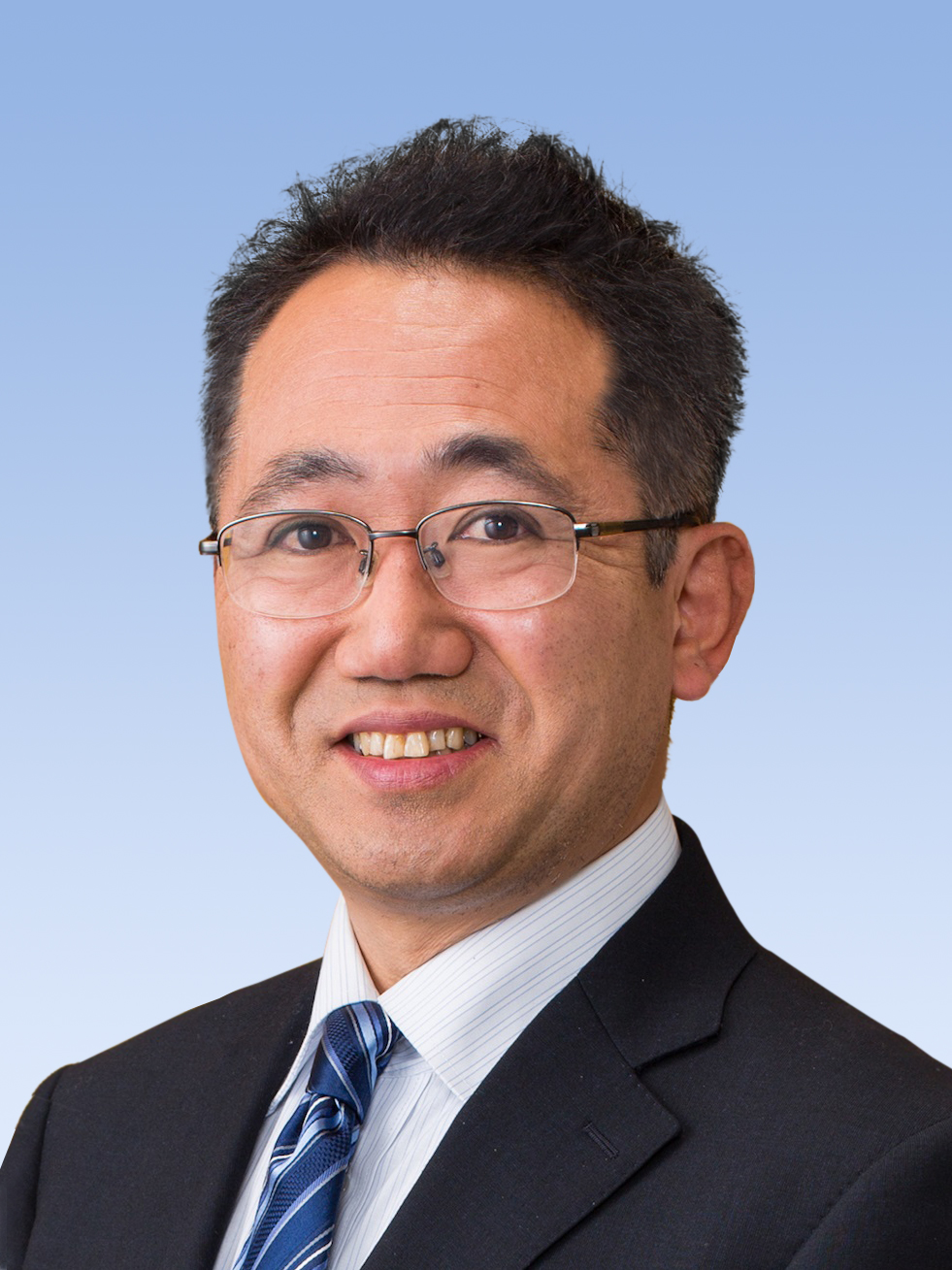
Eiji Oki (IEEE/IEICE Fellow)
Professor,
Kyoto University, Japan
Title: Green Robust Optimization for Energy Saving in Networks under
Traffic Uncertainty
Time:
16:30-17:00, Wednesday, March 7, 2018
Abstract:
Reducing the energy consumption of communication networks is a major concern
for network operators due to economic and environmental reasons. Most of the
studies on minimizing the network energy consumption assume the knowledge of
the exact traffic matrix, which is the set of traffic demands in the
network. There are some works on estimating the traffic matrix, but it
remains a difficult and exhaustive task for network operators as it may
require each destination Internet Protocol (IP) packets header to be
extracted and read. Further, it is more desirable for operators to avoid
frequent dynamic route changes according to traffic fluctuation. This talk
presents a green robust optimization strategy to achieve power savings in
networks under traffic uncertainty. We attempt to achieve a comparable
energy efficiency that the schemes based on the knowledge of the exact
traffic information.
Biography:
Eiji Oki is a Professor at Kyoto University, Kyoto, Japan. He received the B.E. and M.E. degrees in instrumentation engineering and a Ph.D. degree in electrical engineering from Keio University, Yokohama, Japan, in 1991, 1993, and 1999, respectively. In 1993, he joined Nippon Telegraph and Telephone Corporation (NTT) Communication Switching Laboratories, Tokyo, Japan. He has been researching network design and control, traffic-control methods, and high-speed switching systems. From 2000 to 2001, he was a Visiting Scholar at the Polytechnic Institute of New York University, Brooklyn, New York, where he was involved in designing terabit switch/router systems. He was engaged in researching and developing high-speed optical IP backbone networks with NTT Laboratories. He was with The University of Electro-Communications, Tokyo, Japan from July 2008 to February 2017. He joined Kyoto University, Japan in March 2017. He has been active in the standardization of the path computation element (PCE) and GMPLS in the IETF. He wrote more than ten IETF RFCs. Prof. Oki was the recipient of several prestigious awards, including the 1998 Switching System Research Award and the 1999 Excellent Paper Award presented by IEICE, the 2001 Asia-Pacific Outstanding Young Researcher Award presented by IEEE Communications Society for his contributions to broadband network, ATM, and optical IP technologies, the 2010 Telecom System Technology Prize by the Telecommunications Advanced Foundation, IEEE HPSR 2012 Outstanding Paper Award, IEEE HPSR 2014 Best Paper Award Finalist, First Runner Up, and the 2015 IEICE Achievement Award. He has authored/co-authored four books, Broadband Packet Switching Technologies, published by John Wiley, New York, in 2001, GMPLS Technologies, published by CRC Press, Boca Raton, FL, in 2005, Advanced Internet Protocols, Services, and Applications, published by Wiley, New York, in 2012, and Linear Programming and Algorithms for Communication Networks, CRC Press, Boca Raton, FL, in 2012. He is a Fellow of IEEE and IEICE.

Marco Di Renzo (IEEE Distinguished Lecturer)
CNRS Associate Professor, Paris-Saclay University, France
Title: Spatial Modulation Based on Reconfigurable Antennas – A New Air
Interface for the Internet of Things
Time:
17:00-17:30, Wednesday, March 7, 2018
Abstract:
The emerging market of the Internet of Things (IoT) requires new energy-efficient
and low-complexity MultipleInput-Multiple-Output (MIMO-) aided radio access
technologies. This trend will have a profound impact on both the theory and
practice of future communication networks, which will not be purely
optimized for approaching the attainable capacity anymore, but will
explicitly include the energy efficiency during the design and optimization
of the entire protocol stack. In this talk, we put forth a recently
introduced modulation scheme for IoT applications, which leverages the
concepts of Reconfigurable Antennas (RecAnts) and Spatial Modulation (SM).
RecAnt-SM constitutes a promising new air interface in the context of MIMO-aided
transmission, which can be beneficially invoked for the design of
medium-throughput, low-complexity and energy-efficient communication systems
by using a limited number of RF chains and the flexibility of simple RecAnts
designs. Theoretical and experimental results will be illustrated.
Biography:
Marco Di Renzo received the "Laurea" and Ph.D. degrees in Electrical and Information Engineering from the University of L'Aquila, Italy, in 2003 and 2007, respectively. In October 2013, he received the Doctor of Science degree from the University Paris-Sud, France. Since 2010, he has been a "Chargé de Recherche Titulaire" CNRS in the Laboratory of Signals and Systems of Paris-Saclay University - CNRS, CentraleSupélec, Univ Paris Sud, France. He is an Adjunct Professor at the University of Technology Sydney, Australia, a Visiting Professor at the University of L'Aquila, Italy, and a co-founder of the university spin-off company WEST Aquila s.r.l., Italy. He serves as the Associate Editor-in-Chief of IEEE COMMUNICATIONS LETTERS, and as an Editor of IEEE TRANSACTIONS ON COMMUNICATIONS and IEEE TRANSACTIONS ON WIRELESS COMMUNICATIONS. He is a Distinguished Lecturer of the IEEE Vehicular Technology Society and IEEE Communications Society. He is a recipient of several research awards, which include the CNRS Award for Excellence in Research and in Advising Doctoral Students, the IEEE Jack Neubauer Memorial Award, the UK Royal Academy of Engineering Distinguished Visiting Fellowship, the IEEE ComSoc Best Young Researcher Award for Europe, Middle East & Africa Region (EMEA), the Network of Excellence in Wireless Communications Best Paper Award and several conference best paper awards. He is frequent tutorial and invited speaker at IEEE conferences.
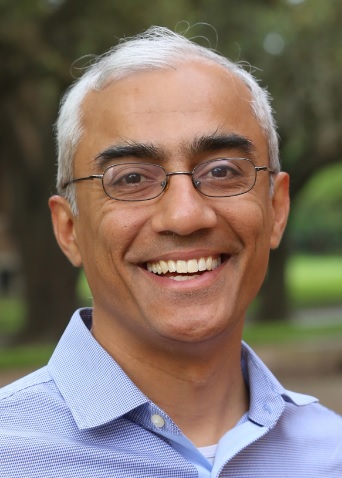
Ashutosh Sabharwal (IEEE Fellow)
Professor,
Rice
University, USA
Title: New Directions in Wireless Full-duplex
Time:
17:30-18:00, Wednesday, March 7, 2018
Abstract:
We discuss new directions in wireless full-duplex that aim to bring wireless
full-duplex closer to adoption by integrating it into existing network
frameworks. The innovations address scaling to large arrays, protocol design
to manage increased interference and novel use cases.
Biography:
Ashutosh Sabharwal is a Professor of Electrical and Computer Engineering in Rice University, Houston, Texas. He is the founder of WARP project (warp.rice.edu), an open-source project which is now in use at more than 125 research groups worldwide, and have been used by more than 450 research articles. His research has spanned both fundamental theory and experimental systems. He is a Fellow of IEEE for his contributions to the theory and experimentation in wireless systems and communications. These days, he is also working on a second research area and has founded the Rice Scalable Health Initiative (http://sh.rice.edu). The goal of the new initiative is both foundational research, and technology translation to make measurable impact in healthcare and wellness. His past research has led to two commercial spinoffs, Mango Communications to commercialize WARP (www.mangocomm.com, founded in 2008) and Cognita Labs to develop novel chronic care products (www.cognitalabs.com, founded in 2013).
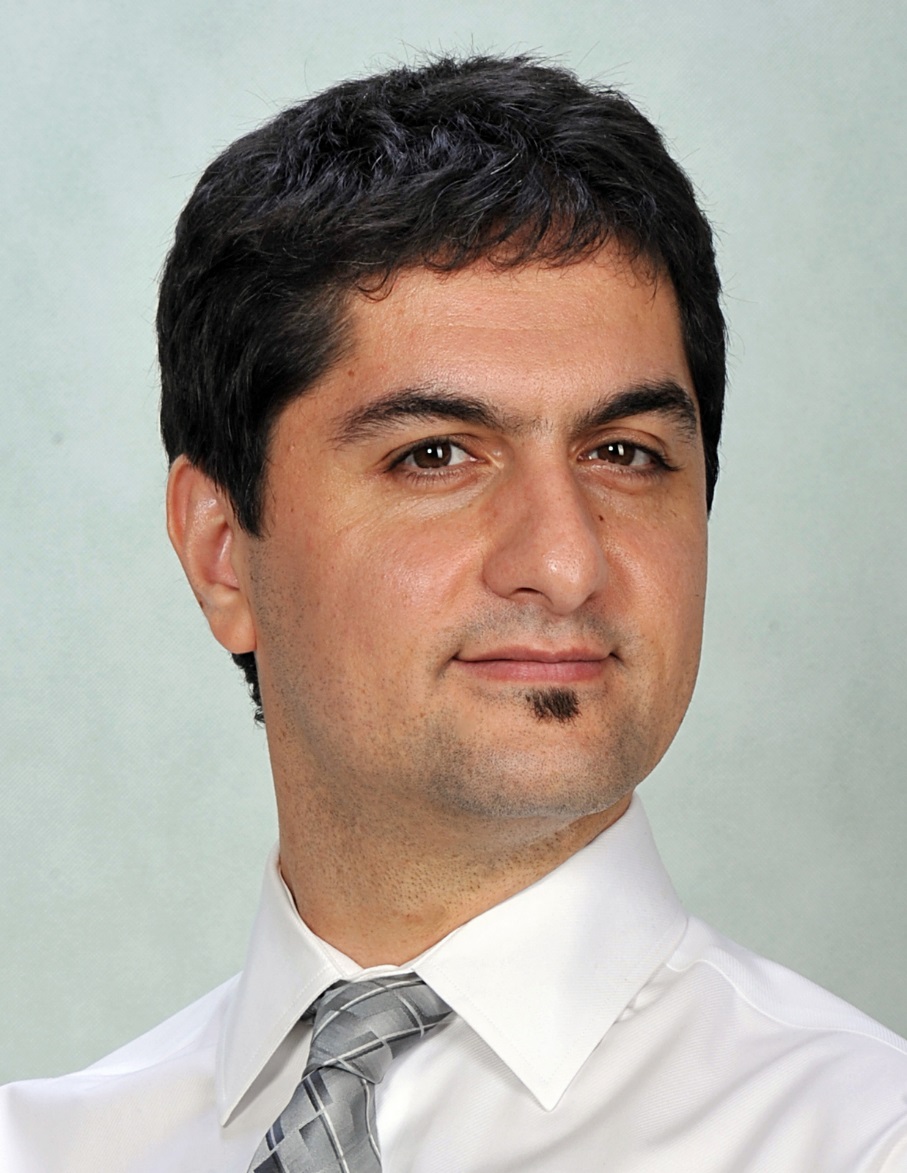
Shervin Shirmohammadi
(IEEE Fellow)
Professor,
University
of Ottawa, Canada
Title: Cloud Gaming: Improving Quality of Experience with Adaptation
and SDN
Time:
10:00-10:30, Thursday, March 8, 2018
Abstract:
While Cloud Gaming was already a US$476 million industry in 2015 and is
expected to rise by 28% by 2021 with actual industry products such as Sony’s
PlayStation Now, Valve’s Steam, Ubitus’s GameNow, G-Cluster, and LiquidSky,
to name a few, its gaming experience still lags traditional console gaming,
due to two main reasons: first, the required bandwidth to achieve acceptable
playing quality is quite high. For example, just for a 720p video resolution
at 50 fps (quite ordinary and near-minimum for today’s gaming standards),
Cloud Gaming requires at least 5 Mbps of always-available bandwidth, with 10
Mbs recommended. Second, cloud gaming is very sensitive to network latencies
which impair the interactive experience of a game. Studies have shown that
Cloud Gaming is currently 1.7 times slower than its console counterpart, a
difficult challenge to overcome since only 70% of end-users are able to meet
the 100 ms latency target required. In this talk, we present solutions based
on Software Defined Networking (SDN) and game adaption that lead to the
delivery of higher gaming Quality of Experience by reducing end-to-end
delay, jitter, and bandwidth. Our solutions target all layers of a Cloud
Gaming system: within the cloud, within the delivery network between the
provider and the user, and at the user’s home gateway.
Biography:
Shervin Shirmohammadi received his Ph.D. in Electrical Engineering from the University of Ottawa, Canada, where he is currently a Professor with the School of Electrical Engineering and Computer Science. He is Director of the Distributed and Collaborative Virtual Environment Research Laboratory, doing research in multimedia systems and networks, specifically video systems, gaming systems, and multimedia-assisted healthcare systems. The results of his research, funded by more than $13 million from public and private sectors, have led to over 300 publications, over 65 researchers trained at the postdoctoral, PhD, and Master’s levels, over 20 patents and technology transfers to the private sector, and a number of awards. He is the Editor-in-Chief of IEEE Transactions on Instrumentation and Measurement, Associate Editor of ACM Transactions on Multimedia Computing, Communications, and Applications, an Associate Editor of IEEE Transactions on Circuits and Systems for Video Technology, and was an Associate Editor of Springer’s Journal of Multimedia Tools and Applications from 2004 to 2012. He is a Key Member of the IEEE MMTC Multimedia Cloud Computing Interest Group, member of the IEEE CS Technical Committee on Multimedia Computing (TCMC), and member of the IEEE ComSoc Technical Committee on Multimedia Communications (MMTC). Dr. Shirmohammadi is an IEEE Fellow for contributions to multimedia systems and network measurements, a Lifetime Senior Member of the ACM, a University of Ottawa Gold Medalist, and a licensed Professional Engineer in Ontario.
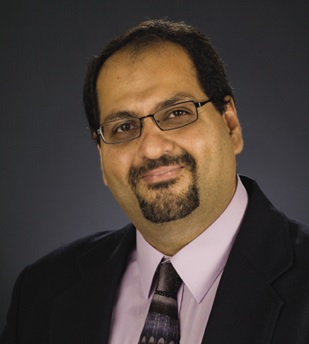
Ness B. Shroff
(IEEE Fellow)
Ohio Eminent Scholar endowed Chair, Ohio State University, USA
Title: A Fresh Look at an Old Problem: Network Utility Maximization —
Convergence, Delay, and Complexity
Time:
10:30-11:00, Thursday, March 8, 2018
Abstract:
Network Utility Maximization has been studied for resource allocation
problems in communication networks for nearly two decades. Nonetheless, a
major challenge that continues to remain open is how to develop a
distributed congestion control and routing algorithm that can simultaneously
provide utility optimality, fast convergence speed, and low delay. To
address this challenge we take a fresh perspective on this old problem and
develop a new algorithm that offers the fastest known convergence speed,
vanishing utility optimality gap with finite queue length, and low routing
complexity. Our key contributions in this paper are: i) the design of a new
joint congestion control and routing algorithm based on a type of inexact
Uzawa method in the Alternating Directional Method of Multiplier; ii) a new
theoretical pa ath to prove global and linear convergence rate without
requiring the full rank assumption of the constraint matrix; and iii) a
clear path for implementing the proposed method in a fully distributed
fashion.
Biography:
Ness B. Shroff received his Ph.D. degree in Electrical Engineering from Columbia University in 1994. He joined Purdue university immediately thereafter as an Assistant Professor in the school of ECE. At Purdue, he became Full Professor of ECE in 2003 and director of CWSA in 2004, a university-wide center on wireless systems and applications. In July 2007, he joined The Ohio State University, where he holds the Ohio Eminent Scholar endowed chair in Networking and Communications, in the departments of ECE and CSE. From 2009-2012, he served as a Guest Chaired professor of Wireless Communications at Tsinghua University, Beijing, China, and currently holds honorary Guest professorships at Shanghai Jiaotong University in China, and the Indian Institute of Technology, Mumbai. His research interests span the areas of communication, social, and cyberphysical networks. He is especially interested in fundamental problems in the design, control, performance, pricing, and security of these networks.
Dr. Shroff is currently an editor at large of IEEE/ACM Trans. on Networking, and on the editorial board of IEEE Transactions on Control of Networked Systems and the IEEE Networks Magazine. He has chaired various conferences and workshops, and co-organized workshops for the NSF to chart the future of communication networks. Dr. Shroff is a Fellow of the IEEE and an NSF CAREER awardee. He has received numerous best paper awards for his research, e.g., at IEEE INFOCOM 2008, IEEE INFOCOM 2006, Journal of Communication and Networking 2005, Computer Networks 2003 (two of his papers also received runner-up awards at IEEE INFOCOM 2005 and INFOCOM 2013), and also student best paper awards (from all papers whose first author is a student) at IEEE WiOPT 2013, IEEE WiOPT 2012 and IEEE IWQoS 2006.
He received the IEEE INFOCOM achievement award for seminal contributions to scheduling and resource allocation in wireless networks, and is noted on the Thomson Reuters ISI list of highly cited researchers, and in Thomson Reuters Book on The World's Most Influential Scientific Minds in 2014.
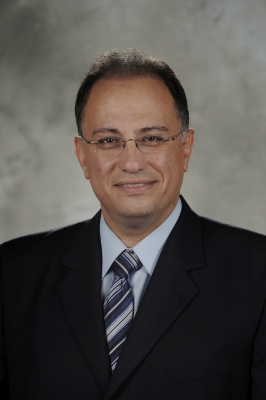
Manos M. Tentzeris
(IEEE Fellow)
Ken Byers Professor,
Georgia Tech, USA
Title: Inkjet-/3D-/4D- Printed Wireless Ultrabroadband mmW Modules:
The Final Step to Bridge Cognitive Intelligence, Nanotechnology and RF for
IoT and 5G Applications
Time:
11:00-11:30, Thursday, March 8, 2018
Abstract:
In this talk, inkjet-/3D-printed flexible antennas, RF electronics and
sensors fabricated on paper and other polymer (e.g.LCP) substrates are
introduced as a system-level solution for ultra-low-cost mass production of
Millimeter-Wave Modules for Communication, Energy Harvesting and Sensing
applications. Prof. Tentzeris will briefly touch up the state-of-the-art
area of fully-integrated wireless sensor modules on paper or flexible LCP
and show the first ever 2D sensor integration with an RFID tag module on
paper, as well as numerous 3D and 4D multilayer paper-based and LCP-based RF/microwave
structures, that could potentially set the foundation for the truly
convergent wireless sensor ad-hoc networks of the future with enhanced
cognitive intelligence and "rugged" packaging. Prof. Tentzeris will discuss
issues concerning the power sources of "near-perpetual" RF modules,
including flexible miniaturized batteries as well as power-scavenging
approaches involving thermal, EM, vibration and solar energy forms. The
final step of the presentation will involve examples from mmW wearable (e.g.
biomonitoring) antennas and RF modules, as well as the first examples of the
integration of ultrabroadband (Gb/sec) inkjet-printed nanotechnology-based
communication modules as well as wireless (e.g.CNT) sensors on paper and
organic substrates for Internet of Things (IoT), 5G and autonomous vehicles
applications. It has to be noted that the talk will review and present
challenges for inkjet-printed organic active and nonlinear devices as well
as future directions in the area of environmentally-friendly ("green") RF
electronics and "smart-skin' conformal sensors.
Biography:
Professor Tentzeris was born and grew up in Piraeus, Greece. He graduated from Ionidios Model School of Piraeus in 1987 and he received the Diploma degree in Electrical Engineering and Computer Science (Magna Cum Laude) from the National Technical University in Athens, Greece, in 1992 and the M.S. and Ph.D. degrees in Electrical Engineering and Computer Science from the University of Michigan, Ann Arbor in 1993 and 1998.
He is currently a Professor with the School of ECE, Georgia Tech and he has published more than 550 papers in refereed Journals and Conference Proceedings, 4 books and 23 book chapters, while he is in the process of writing 1 book. He has served as the Head of the Electromagnetics Technical Interest Group of the School of ECE, Georgia Tech. Also, he has served as the Georgia Electronic Design Center Associate Director for RFID/Sensors research from 2006-2010 and as the GT-Packaging Research Center (NSF-ERC) Associate Director for RF research and the leader of the RF/Wireless Packaging Alliance from 2003-2006. Also, Dr. Tentzeris is the Head of the A.T.H.E.N.A. Research Group (20 students and researchers) and has established academic programs in 3D Printed RF electronics and modules, flexible electronics, origami and morphing electromagnetics, Highly Integrated/Multilayer Packaging for RF and Wireless Applications using ceramic and organic flexible materials, paper-based RFID's and sensors, inkjet-printed electronics, nanostructures for RF, wireless sensors, power scavenging and wireless power transfer, Microwave MEM's, SOP-integrated (UWB, mutliband, conformal) antennas and Adaptive Numerical Electromagnetics (FDTD, MultiResolution Algorithms). He was the 1999 Technical Program Co-Chair of the 54th ARFTG Conference and he is currently a member of the technical program committees of IEEE-IMS, IEEE-AP and IEEE-ECTC Symposia. He was the TPC Chair for the IMS 2008 Conference and the Co-Chair of the ACES 2009 Symposium. He was the Chairman for the 2005 IEEE CEM-TD Workshop. He was the Chair of IEEE-CPMT TC16 (RF Subcommittee) and he was the Chair of IEEE MTT/AP Atlanta Sections for 2003. He is a Fellow of IEEE, a member of MTT-15 Committee, an Associate Member of European Microwave Association (EuMA), a Fellow of the Electromagnetics Academy, and a member of Commission D, URSI and of the the Technical Chamber of Greece. He is the Founder and Chair of the newly formed IEEE MTT-S TC-24 (RFID Technologies). He is one of the IEEE C-RFID DIstinguished Lecturers and he has served as one IEEE MTT-Distinguished Microwave Lecturers (DML) from 2010-2012.

Zhi Tian (IEEE Fellow)
Professor,
George Mason University, USA
Title: Gridless Compressed Sensing Meets Phase Retrieval
Time:
11:30-12:00, Thursday, March 8, 2018
Abstract:
Phase retrieval refers to the problem of recovering a signal from only the
amplitude of its linear measurements. It appears in a wide range of signal
processing applications where sensors cannot measure the phase information
(e.g. X-ray imaging, microscopy), or the sampled phase information is
polluted by unavoidable and inseparable phase errors (e.g., radar imaging).
PhaseLift is a noted convex optimization technique for phase retrieval, but
it requires a relatively large number of samples that sometimes can be
costly to acquire. In this talk, we exploit salient features of the signals
to considerably reduce the number of samples required by PhaseLift. We
focuses on some practical applications where the signal of interest is
composed of a few Vandermonde components, such as line spectra. A novel
phase retrieval framework, namely ANM-PhaseLift, is developed that exploits
the Vandermonde structure to alleviate the sampling requirements. The
benefit of ANM-PhaseLift is particularly attractive in applications where
the Vandermonde structure is presented, such as massive MIMO and radar
imaging.
Biography:
Dr. Zhi Tian is a Professor in the Electrical and Computer Engineering Department of George Mason University, Fairfax, VA, since 2015. Prior to that, she was on the faculty of Michigan Technological University from 2000 to 2014. She served as a Program Director at the US National Science Foundation from 2012 to 2014. Her research interests lie in statistical signal processing, wireless communications and wireless sensor networks. She is an IEEE Fellow. She was an IEEE Distinguished Lecturer for both the IEEE Communications Society and the IEEE Vehicular Technology Society. She served as Associate Editor for IEEE Transactions on Wireless Communications and IEEE Transactions on Signal Processing. She served on many posts at the IEEE, such as General Chair of the 2016 IEEE GlobalSIP Conference, and Chair of the IEEE Signal Processing Society Big Data Special Interest Group.

Toshitaka Tsuda (IEEE/IEICE Fellow)
Guest Professor, Waseda University, Japan
Title: NDN view of the 5G mobile network and IoT
Time:
13:30-14:00, Thursday, March 8, 2018
Abstract:
In this talk I will present how NDN(Named Data Networking), which is an
emerging network paradigm and we are one of the active R&D group in this
field, is related to the recent 5G mobile network R&D activities, and then
which features can contribute to IoT. In the 5G, activities trying to change
the basic structure of core network part into more flexible one with the use
of slice concept are going on together with the wireless access technology
advancement. The 5G mobile network aims to realize enhanced mobile broad
band(eMBB), ultra-Reliable low latency communication(URLLC), and massive
machine type communication(MMTC) network, and one of the application target
area is IoT. To realize low latency, introduction of mobile edge computing
is one of the hot topics. These movements are giving the chance of early
deployment of emerging network architecture such as NDN and the In-Network
data processing concept. On the other hand, NDN can provide with attractive
features to IoT use cases. Some typical cases that NDN can provide with
benefit will be introduced.
Biography:
Dr. Toshitaka Tsuda received BS, MS, and PhD degrees in electrical engineering from the University of Tokyo in 1970, 1972 and 1975, respectively. He joined Fujitsu Laboratories Ltd. in 1975, where he engaged in R&D of digital signal processing, micro-processor architecture, video coding, ISDN transmission, optical communication, packet switching, and network architecture. In Fujitsu Laboratories, he worked as Senior Vice President, Member of the Board, Managing Director of Fujitsu Laboratories of Europe, and Chairman of the Board of Fujitsu Laboratories of America. 2012-2015 he was a Professor of Waseda University, and currently a guest professor of Waseda University, an associate Member of Science Council of Japan, and the president of ICN consortium of Japan. He is a Fellow of IEEE, an Honorary member and Fellow of Institute of Electrical Information and Communication Engineers (IEICE), past Chairman of IEEE Tokyo Section, and former President of IEICE. He made several keynote speeches, ICC2011 and NOMS2012 being the examples.

Li-Chun Wang (IEEE Fellow)
Professor and Chairman, National Chiao Tung University, Taiwan
Title: Learning-Based Ultra-Dense Small Cell Networks in Dynamic
Environments
Time:
14:00-14:30, Thursday, March 8, 2018
Abstract:
Ultra-dense small cells can achieve high capacity, but pose challenges on
managing complicated interference with dynamical traffic patterns and
time-varying channels. In this talk we discuss a data-driven bi-adaptive
self organizing network (Bi-SON) aiming to improve energy efficiency and
reduce interference for ultra-dense small cells by simultaneously
considering cell switching on/off, transmission power adjustment, and
time-varying channels. We will introduce a Bi-SON testbed at NCTU, of which
the experimental results demonstrate an interesting finding -- a data-driven
learning performance prediction model can actually help a simple algorithm
be upgraded to a powerful adaptation technique in a complex communications
environment. As such, the proposed systemic data-driven Bi-SON seemingly
shed the light on the research area of wireless QoS when facing even more
dynamic and complicated environments. Some interesting research topics
extended from this work, such as AI-enabled wireless network on top of
Bi-SON, will be also discussed to end this talk.
Biography:
Li-Chun Wang (M'96 -- SM'06 -- F'11) received Ph. D. degree from the Georgia Institute of Technology, Atlanta, in 1996. From 1996 to 2000, he was with AT&T Laboratories, where he was a Senior Technical Staff Member in the Wireless Communications Research Department. Since August 2000, he has joined the Department of Electrical and Computer Engineering of National Chiao Tung University in Taiwan and is jointly appointed by Department of Computer Science and Information Engineering of the same university.
Dr. Wang was elected to the IEEE Fellow in 2011 for his contributions to cellular architectures and radio resource management in wireless networks. He won the Distinguished Research Award of National Science Council, Taiwan (2012). He was the co-recipients of IEEE Communications Society Asia-Pacific Board Best Award (2015), Y. Z. Hsu Scientific Paper Award (2013), and IEEE Jack Neubauer Best Paper Award (1997).
His current research interests are in the areas of software-defined mobile networks, heterogeneous networks, and data-driven intelligent wireless communications. He holds 19 US patents, and have published over 200 journal and conference papers, and co-edited a book, “Key Technologies for 5G Wireless Systems,” (Cambridge University Press 2017).

Xin Wang
Distinguished Professor, Fudan University, China
Title: Resource Allocation for Green Coordinated Multipoint
Communication Systems
Time:
17:30-18:00, Thursday, March 8, 2018
Abstract:
Green coordinated transmissions play an important role in development of the
next-generation energy- and spectrum-efficient cellular heterogeneous
networks (HetNets). On the other hand, by fast evolution of the current
power network infrastructure, it is expected that all future communication
systems will be powered by a smart grid with high penetration of renewable
energy sources (RES). Integration of smart-grid technologies and RES into
system designs then holds the key to fully exploiting the potential of
coordinated communications in future HetNets. To this end, we establish a
new paradigm to develop low-complexity online (real-time) control schemes
for efficient utilization of the RES and wireless communication resource.
Leveraging the stochastic optimization approach, a unified framework is
developed for modeling, analyzing, and designing efficient, robust,
distributed, two-timescale online resource management schemes in smart-grid
powered coordinated multipoint communication systems. It is shown – both
theoretically and empirically- that the proposed algorithms and schemes can
significantly improve the energy efficiency of the coordinated communication
systems in practical stochastic and dynamic network environments.
Biography:
Xin Wang received the B.Sc. and M.Sc. degrees from Fudan University, Shanghai, China, in 1997 and 2000, respectively, and the Ph.D. degree from Auburn University, Auburn, AL, USA, in 2004, all in electrical engineering. From 2004 to 2006, he was a Postdoctoral Research Associate with the Department of Electrical and Computer Engineering, University of Minnesota, Minneapolis. In 2006, he joined the Department of Computer and Electrical Engineering and Computer Science, Florida Atlantic University, Boca Raton, FL, USA, as an Assistant Professor, and then an Associate Professor from August 2010. He is currently a Distinguished Professor with the Department of Communication Science and Engineering, Fudan University. He has served as an Associate Editor for the IEEE Transactions on Signal Processing, the IEEE Transactions on Vehicular Technology, and the IEEE Signal Processing Letters. His research interests include stochastic network optimization, energy-efficient communications, cross-layer design, and signal processing for communications.

Vincent Wong (IEEE Fellow)
Professor, University of British Columbia, Canada
Title: Non-Orthogonal Multiple Access in 5G Wireless Networks
Time:
14:30-15:00, Thursday, March 8, 2018
Abstract:
Non-orthogonal multiple access (NOMA) is a spectrally efficient multiple
access technique, which has the potential to meet the rapidly increasing
traffic demand of the fifth generation (5G) wireless networks. With NOMA,
multiple users can be simultaneously served by the same base station via
exploiting the power domain in addition to the time and frequency domains.
However, by sharing the frequency channel and transmit power among the
paired NOMA users, NOMA may not always achieve better performance than
orthogonal multiple access (OMA). In this talk, the basic idea of NOMA
transmission is firstly discussed. For downlink NOMA transmission with
dynamic traffic arrival for spatially random users, two variants of NOMA
schemes, i.e., opportunistic NOMA and cooperative NOMA with full-duplex
relaying, are proposed to enhance the stable throughput region, which is
characterized by using tools from queueing theory and stochastic geometry.
Moreover, a dynamic decode-and-forward based cooperative NOMA is also
proposed to achieve both superimposed transmission and cooperative diversity
in one time slot. Results show that the sum rate of the proposed NOMA scheme
over OMA is higher when users having more diverse target data rates are
paired.
Biography:
Vincent Wong received his B.Sc. (with distinction) degree from the University of Manitoba in 1994, M.A.Sc. degree from the University of Waterloo in 1996, and Ph.D. from the University of British Columbia (UBC) in 2000, all in electrical engineering. From 2000 - 2001, he was a systems engineer at PMC-Sierra Inc. (now Microsemi). In 2002, he joined the Department of Electrical and Computer Engineering at the University of British Columbia, where he is currently a Professor. His research areas include protocol design, optimization, and resource management of communication networks, with applications to the Internet, wireless networks, smart grid, mobile cloud computing, and Internet of Things. Dr. Wong is an editor of IEEE Transactions on Communications and a guest editor of IEEE Wireless Communications. He has served as a guest editor of IEEE Journal on Selected Areas in Communications and on the editorial boards of IEEE Transactions on Vehicular Technology and Journal of Communications and Networks. He is the Chair of the IEEE Communications Society Emerging Technical Subcommittee on Smart Grid Communications and IEEE Vancouver Joint Communications Chapter. Dr. Wong received the 2014 UBC’s Killam Faculty Research Fellowship. He is a Fellow of the IEEE (Class of 2016).

Naoaki Yamanaka (IEEE/IEICE Fellow)
Professor, Keio University, Japan
Title: Optically interconnected resource pool architecture for future
backbone network with service scalability
Time:
15:00-15:30, Thursday, March 8, 2018
Abstract:
Service scalability is one of the key issue for future networks. For this, we propose new optical interconnected service function pool architecture having flexibility and high-efficiency. The service scalability is a feature which can create new services with combination of multiple functions. In addition, some functions must be realized by VLSI, FPGA, and software (i.e. NFV) according to their required performance. Software based flexible functions has some advantages that service throughput can be changed by control VM performance. Combination of multiple functions are using by optical interconnection that can relax distance and capacity restrictions among functions that realized by different technologies.
In this talk, we propose a resource pool architecture that all functional resources in the network are called "resource pool". To create the service, proper resources are selected and interconnected by the optical interconnection. In addition, some simulation and prototype study results are also described. The proposed architecture is useful for future backbone networks.
Biography:
Dr. Yamanaka graduated from Keio University, Japan where he received B.E., M.E., and Ph. D. degrees in engineering in 1981, 1983 and 1991, respectively. In 1983 he joined Nippon Telegraph and Telephone Corporation’s (NTT’s) Communication Switching Laboratories, Tokyo, Japan. His research areas are Network Architecture in Optical Network, Cloud Computing, Smart Network, Communication Protocol, and Optical Switching System including Optical Devices. He was a vice director of Asia Pacific Board at IEEE Communications Society, and was an Editor of IEICE Transaction on Communications as well as a director at IEICE. He is an IEEE Fellow and an IEICE Fellow.

Michele Zorzi (IEEE Fellow)
Professor, University of Padova, Italy
Title: Reliable Video Streaming over mmWave with Multi Connectivity
and Network Coding
Time:
16:00-16:30, Wednesday, March 7, 2018
Abstract:
The next generation of multimedia applications will require the
telecommunication networks to support a higher bitrate than today, in order
to deliver virtual reality and ultrahigh quality video content to the users.
Most of the video content will be accessed from mobile devices, prompting
the provision of very high data rates by next generation (5G) cellular
networks. A possible enabler in this regard is communication at mmWave
frequencies, given the vast amount of available spectrum that can be
allocated to mobile users; however, the harsh propagation environment at
such high frequencies makes it hard to provide a reliable service. This
paper presents a reliable video streaming architecture for mmWave networks,
based on multi connectivity and network coding, and evaluates its
performance using a novel combination of the ns-3 mmWave module, real video
traces and the network coding library Kodo. The results show that it is
indeed possible to reliably stream video over cellular mmWave links, while
the combination of multi connectivity and network coding can support high
video quality with low latency.
Biography:
Michele Zorzi received his Laurea and Ph.D. degrees in electrical engineering from the University of Padova in 1990 and 1994, respectively. During academic year 1992/1993 he was on leave at the University of California San Diego (UCSD). After being affiliated with the Dipartimento di Elettronica e Informazione, Politecnico di Milano, Italy, the Center for Wireless Communications at UCSD, and the University of Ferrara, in November 2003 he joined the faculty of the Information Engineering Department of the University of Padova, where he is currently a professor. His present research interests include performance evaluation in mobile communications systems, random access in mobile radio networks, ad hoc and sensor networks and IoT, energy constrained communications protocols, 5G millimeter-wave cellular systems, and underwater communications and networking. He was Editor-in-Chief of IEEE Wireless Communications from 2003 to 2005, Editor-in-Chief of IEEE Transactions on Communications from 2008 to 2011, and is currently the founding Editor-in-Chief of IEEE Transactions on Cognitive Communications and Networking. He was Guest Editor for several Special Issues in IEEE Personal Communications, IEEE Wireless Communications, IEEE Network, and IEEE JSAC. He served as a Member-at-Large in the Board of Governors of the IEEE Communications Society from 2009 to 2011, and as its Director of Education from 2014 to 2015. He is a Fellow of the IEEE.